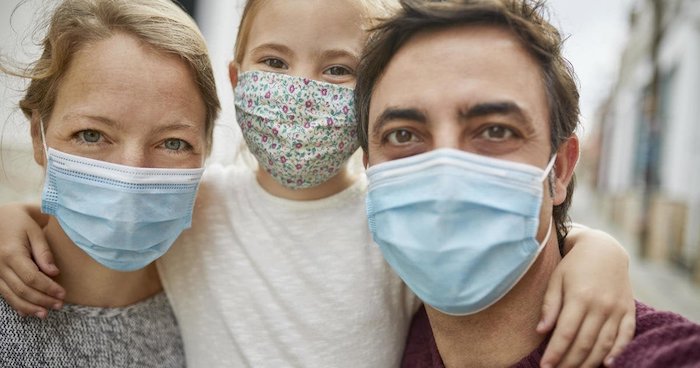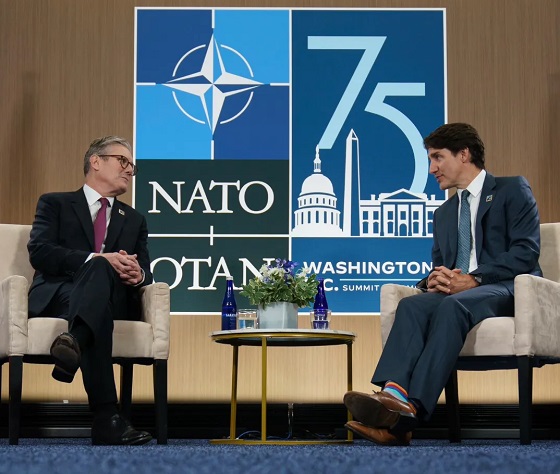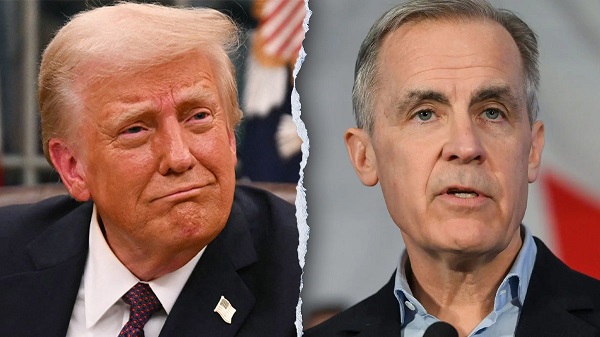COVID-19
Wenstrup Releases Francis Collins’ House Testimony

From the Brownstone Institute
BY
Wenstrup Releases Former NIH Director Francis Collins’ Transcript, Highlights Key Takeaways in New Memo
WASHINGTON — Today, Select Subcommittee on the Coronavirus Pandemic Chairman Brad Wenstrup (R-OH) released the transcript from Dr. Francis Collins’ transcribed interview. Dr. Collins helped lead the government’s Covid-19 pandemic response as the Director of the National Institutes of Health (NIH) until his resignation at the end of 2021. In conjunction with the transcript, the Select Subcommittee also released a new staff memo that highlights the key takeaways from Dr. Collins’ transcribed interview. The memo can be found here.
The full transcript can be found here. Below are important exchanges from Dr. Collins’ transcribed interview:
The hypothesis that the Covid-19 pandemic was the result of a lab leak or lab-related accident is not a conspiracy theory. Despite previously disagreeing with the lab-leak theory — both in public and in private — Dr. Collins testified that the lab-leak hypothesis is indeed not a conspiracy theory.
Majority Counsel: “All it’s calling for is a “yes” or “no.” Is the possibility of a lab leak a conspiracy theory?”
Dr. Collins: “You have to define what you mean by a lab leak.”
Majority Counsel: “Putting aside de novo, the possibility of a laboratory or research-related accident, a researcher doing something in a lab, getting infected with a virus, and then sparking the pandemic. Is that scenario a conspiracy theory”?
Dr. Collins: “Not at this point.”
Majority Counsel: “We have talked about this an awful lot, I think I know the answer to the question, but I want to ask it. Is the origin of Covid-19 still unsettled science?”
Dr. Collins: “Yes.”
The “6-feet apart” social distancing guidance that federal public health officials endorsed was likely not based on any science or data. Dr. Collins agreed with Dr. Fauci that he has not seen any evidence to support the “6-feet apart” directive — which was promoted by public health officials and caused widespread economic and social damage to Americans.
Majority Counsel: “Moving on to social distancing and the various regulations surrounding that. On March 22, 2020, the CDC issued guidance describing social distancing to include remaining out congregant settings, avoiding mass gatherings, and maintaining a distance of approximately six feet from others when possible. We asked Dr. Fauci where the six feet came from and he said it kind of just appeared, is the quote. Do you recall science or evidence that supported the six-feet distance?”
Dr. Collins: “I do not.”
Majority Counsel: “Is that I do not recall or I do not see any evidence supporting six feet?”
Dr. Collins: “I did not see evidence, but I’m not sure I would have been shown evidence at that point.”
Majority Counsel: “Since then, it has been an awfully large topic. Have you seen any evidence since then supporting six feet?”
Dr. Collins: “No.”
NIH often lacks the necessary subject matter expertise to ensure US taxpayer funds are spent safely. Concerningly, Dr. Collins was unaware of any NIH policy that ensures foreign laboratories comply with US standards and are not at odds with U.S. national interests.
Majority Counsel: “Thank you. We’ve asked a number of people regarding the vetting or certifying process of foreign labs that receive U.S. dollars. Do you know what that process is?”
Dr. Collins: “I do not.”
Majority Counsel: “To your knowledge, does NIH certify foreign labs that receive U.S. dollars?”
Dr. Collins: “I don’t know that.”
Majority Counsel: “Again, what we’re trying to figure out is if, like, you get a proposal that has a foreign lab on it, if the NIH would do all the work themselves, or if they would call the State Department, or if they would call some other department to try to determine if that foreign lab is reputable.”
Dr. Collins: “I don’t know.”
The Trump Administration led the charge to rightfully terminate and later suspend EcoHealth Alliance, Inc.’s grant in April 2020. Dr. Collins testified that he supported every enforcement action suggested by the Trump administration and executed by the NIH.
Majority Counsel: “Moving into 2020. Before we start with individual letters, we asked Dr. Lauer and he testified that he would not sign or send a letter that he disagreed with. Do you have any reason to doubt that assertion?”
Dr. Collins: “No.”
Majority Counsel: “Do you agree with every enforcement action the NIH took against EcoHealth?”
Dr. Collins: “Yes.”
Dr. Collins claims that Dr. Fauci invited him to participate in the infamous February 1, 2020 phone call that allegedly “prompted” the public narrative that Covid-19 originated from nature and that vilified the lab-leak hypothesis.
This testimony directly contradicts earlier statements made by Dr. Fauci.
Majority Counsel: “How were you made aware of this call?”
Dr. Collins: “I was, I think – again, it’s four years ago – initially informed by Dr. Fauci that the call was happening. And then, I think I got this email forwarded about what the agenda was going to be from Dr. Farrar, who was clearly the person organizing the call.”
Majority Counsel: “Did Dr. Fauci ask you to join the call?”
Dr. Collins: “Yes.”
There we have it. Ex-director NIH Francis Collins had NO data and has not seen any data to support the social distancing edicts from HHS.
The transcript itself documents that Director Collins had evidence that masking would harm children.
From the transcript:
Q: In the realm of masking, obviously masks became this big to-do during the pandemic. One of the specific aspects that we are interested in is the science and data that supported it for children. So the WHO recommended against masking children less than five because masks are, I’m quoting, not in the overall interest of the child, and against children 6 to 11 from wearing masks because of again, quoting, the potential impact of wearing a mask on learning and psychological development. The United States recommended masking kids as young as two, so directly contradicted the WHO’s recommendation on that.
Do you recall what science or data backed up that recommendation?
Collins: I have no knowledge of that.
Q: Okay. There are now studies coming out regarding learning loss from both school closures and childhood mask wearing — for masks specifically, kids not being able to see adults form words and things like that and it’s causing speech issues. Are you aware of those issues?
Collins: In a general way, yes.
Q: Do you agree that there’s learning loss and other unintended consequences of mask-wearing?
Collins: I have to depend on the experts who assess those things who have evidence, they say, that that’s the case.
This is all the evidence required to conclusively demonstrate that the United States Department of Health and Human Services (HHS) needs a complete overhaul.
Republished from the author’s Substack
COVID-19
Tamara Lich says she has no ‘remorse,’ no reason to apologize for leading Freedom Convoy

From LifeSiteNews
‘To whom shall I apologize? Thousands of Canadians who stopped planning to take their own lives or were able to return to their jobs, kiss dying loved ones or have families over for Thanksgiving?’
Freedom Convoy leader Tamara Lich, reflecting on her recent house arrest verdict, said she has no “remorse” and will not “apologize” for leading a movement that demanded an end to all COVID mandates.
Lich revealed in an X post this week that in conversations with her lawyer, Lawrence Greenspon, over the past few months, she told him, “I would not, and could not, express remorse as it would be dishonest and disingenuous.”
“To whom shall I apologize? The thousands of Canadians who stopped planning to take their own lives when the convoy started? To the thousands of Canadians who were able to return to their jobs? Or should I apologize to all the Canadians who can kiss their dying loved ones or have their families over for Thanksgiving?” she observed.
On October 7, Ontario Court Justice Heather Perkins-McVey sentenced Lich and Chris Barber to 18 months’ house arrest after being convicted earlier in the year convicted of “mischief.”
As reported by LifeSiteNews, the Canadian government was hoping to put Lich in jail for no less than seven years and Barber for eight years for their roles in the 2022 protests against COVID mandates.
Interestingly, Perkins-McVey said about Lich and Barber during the sentencing, “They came with the noblest of intent and did not advocate for violence.”
In Lich’s X post, she noted that while she has “no doubt” some citizens of Ottawa “felt afraid, threatened and terrorized” by the protests, she blamed the Liberal government under former Prime Minister Justin Trudeau.
“How could they not when their mayor and politicians were labeling us as an angry mob coming to overthrow the government before we even left Alberta?” she wrote.
“Do I feel bad for these people? Of course I do. I wish no ill will upon anyone. However, it was their very own leaders who lied to them and misled them. There are citizens in Ottawa genuinely afraid of working-class Canadians, who had never met a trucker or an oil patch worker.”
Lich noted how she told her lawyer that she would “serve 100 years in prison before I will ever apologize.”
Specifically, Barber was handed an 18-month conditional sentence, with a concurrent three-month sentence for counseling disobedience of a court order that can be served in the community.
Lich was given 18 months less time already spent in custody, amounting to 15 1/2 months.
Both Lich and Barber must remain in their house for the first 12 months except for medical emergencies and certain appointments. They are allowed to work and can leave their house for certain permitted activities for up to five hours once a week. They were also given a curfew and 100 hours of community service.
As reported by LifeSiteNews, Barber thanked Conservative MP Leslyn Lewis for “speaking up” in support of him and Canadians’ freedom rights after he and Lich were sentenced.
LifeSiteNews reported that Conservative Party leader Pierre Poilievre offered his thoughts on the sentencing, wishing them a “peaceful” life while stopping short of blasting the sentence as his fellow MPs did.
In early 2022, the Freedom Convoy saw thousands of Canadians from coast to coast come to Ottawa to demand an end to COVID mandates in all forms. Despite the peaceful nature of the protest, Trudeau’s government enacted the never-before-used Emergencies Act (EA) on February 14, 2022.
COVID-19
Canadian commentators call Freedom Convoy leaders’ sentences ‘onerous,’ ‘too stiff’

From LifeSiteNews
“The understandable reaction is going to be ‘Well, the crown was asking for much more, so this is actually a victory. Bullsh*t. Having to tolerate injustice and rationalize it as being acceptable because it’s less of an injustice than what could’ve been is bullsh*t”
Canadian political pundits and right-of-center media were quick to blast what they called “onerous” house arrest conditions placed on Freedom Convoy leaders Tamara Lich and Chris Barber, who were sentenced yesterday by an Ontario judge after earlier being found guilty of mischief.
Rebel News head Ezra Levant, who has been covering the trial extensively, gave his assessment of the verdict, saying there was “good” and “bad” news.
“Good news: no additional jail time for Tamara Lich or Chris Barber,” he wrote on X.
“Bad news: onerous house arrest provisions. The real punishment was the longest mischief trial in Canadian history. Total political vendetta by Doug Ford’s prosecutors.”
On October 7, Ontario Court Justice Heather Perkins-McVey sentenced Lich and Chris Barber to 18 months’ house arrest after being convicted earlier in the year convicted of “mischief.”
As reported by LifeSiteNews, the Canadian government was hoping to put Lich in jail for no less than seven years and Barber for eight years for their roles in the 2022 protests against COVID mandates.
Interestingly, Perkins-McVey said during Tuesday’s sentencing, “They came with the noblest of intent and did not advocate for violence,” Perkins-McVey said of Lich and Barber.
Political commentator Rupa Subramanya was pleased with the overall outcome.
“So no jail time for @LichTamara and @ChrisBarber1975. House arrest, curfew, and time in the community for both. Good outcome. Finally, they can put this chapter behind them. And everyone can move on. It’s been a long 3 years!”
Brian Lilley, a political commentator for the Toronto Sun, called the overall sentence “too stiff.”
“Lich & Barber both given 18-month conditional sentences with house arrest, with carve-outs, for their mischief convictions related to the Freedom Convoy. Too stiff in my view based on the facts, but better than what other judges would have given,” he wrote on x.
Well-known Canadian celebrity and commentator Brett Wilson observed while the sentence could have been worse, Lich and Barber should have had “nothing” as punishment, saying instead that former Prime Minister Justin Trudeau should be the one penalized.
“Delighted with the overall Freedom Convoy sentence being JUST house arrest. Not jail,” he wrote on X.
“Trudeau should be sharing a matching penalty. And I wish the sentence were nothing. But here we are. The Crown Sentence request was absolute bullsh*t.”
Canadians should not accept house arrest verdict as ‘victory,’ warns commentator
Well-known online commentator Viva Frei was not as gracious with Lich and Barber’s verdict, saying “having to tolerate injustice and rationalize it as being acceptable” is like the “boiling frog analogy.”
“The understandable reaction is going to be ‘Well, the crown was asking for much more, so this is actually a victory. Bullsh*t. Having to tolerate injustice and rationalize it as being acceptable because it’s less of an injustice than what could’ve been is bullshit,” he wrote on X.
“It’s the boiling frog analogy. You tolerate injustice, you rationalize injustice, you will get more injustice.”
Frei doubled down, calling the sentence “absolute judicial horsesh**,” noting how saying,
“it could’ve been worse” will pretty “much always be true.”
“Call it out for what it is. This sentence is an absolute outrageous injustice. The sentence should have been time served, with an apology from the judge,” he wrote.
“The entire system in Canada is fu**ed beyond belief. Possibly fu**ed beyond repair.”
Specifically, Barber was handed an 18-month conditional sentence, with a concurrent three-month sentence for counseling disobedience of a court order, that can be served in the community.
Lich was given 18 months less time, taking into account the time already spent in custody, which amounts to 15 1/2 months.
Both Lich and Barber must remain in their house for the first 12 months except for medical emergencies and certain appointments. They are allowed to work and can leave their house for certain permitted activities for up to five hours once a week. They were also given a curfew and 100 hours of community service.
In early 2022, the Freedom Convoy saw thousands of Canadians from coast to coast come to Ottawa to demand an end to COVID mandates in all forms. Despite the peaceful nature of the protest, Trudeau’s government enacted the never-before-used Emergencies Act (EA) on February 14, 2022.
-

 Business1 day ago
Business1 day agoThe Grocery Greed Myth
-

 COVID-192 days ago
COVID-192 days agoTamara Lich says she has no ‘remorse,’ no reason to apologize for leading Freedom Convoy
-

 Crime2 days ago
Crime2 days agoCanada’s safety minister says he has not met with any members of damaged or destroyed churches
-

 Business2 days ago
Business2 days agoTrump Warns Beijing Of ‘Countermeasures’ As China Tightens Grip On Critical Resources
-

 International2 days ago
International2 days agoTrump gets an honourable mention: Nobel winner dedicates peace prize to Trump
-

 Business1 day ago
Business1 day agoTax filing announcement shows consultation was a sham
-

 Frontier Centre for Public Policy5 hours ago
Frontier Centre for Public Policy5 hours agoCanada’s Democracy Is Running On Fumes
-

 Education5 hours ago
Education5 hours agoClassroom Size Isn’t The Real Issue







